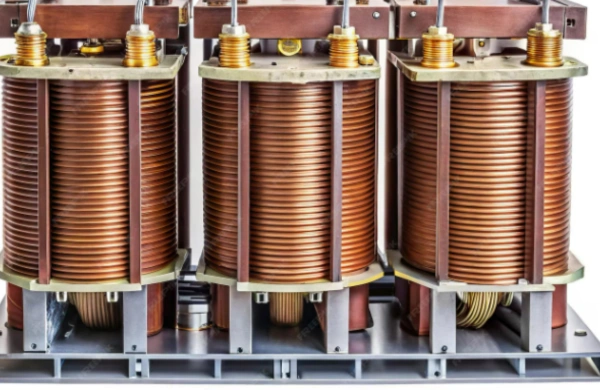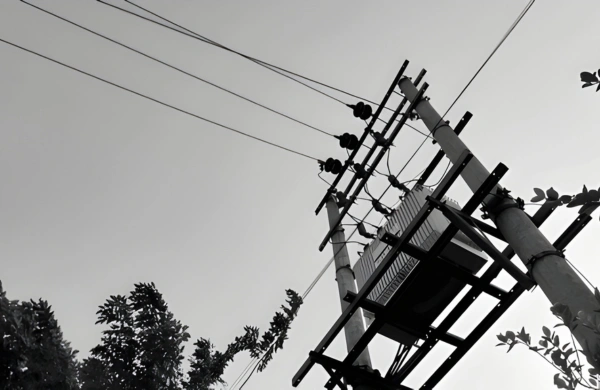In today’s energy-conscious world, industries and utilities are under constant pressure to reduce power losses and improve operational efficiency. The challenge is not just producing more energy — it’s using existing energy more efficiently. One of the most effective innovations addressing this challenge is the amorphous core transformer.
These transformers utilize advanced magnetic materials to drastically cut down on core losses, making them an essential part of modern power distribution networks. As grid modernization and renewable integration continue to grow, amorphous core technology is becoming the standard for energy-efficient and environmentally responsible power systems.
Know About Efficiency Redefined: How Amorphous Core Transformers Reduce Energy Losses
What Makes an Amorphous Core Transformer Different?
An amorphous core transformer is built using amorphous metal alloys, instead of the traditional cold rolled grain-oriented (CRGO) steel used in conventional transformers.
The difference lies in the atomic structure of the core material.
- CRGO steel has a crystalline grain structure that causes higher energy losses during magnetization.
- Amorphous metals, on the other hand, have a random atomic arrangement, which minimizes domain wall movement and reduces magnetic hysteresis losses.
The result?
Transformers that can achieve up to 70% lower no-load losses, significantly improving the efficiency of power distribution systems.
Engineering Science Behind the Efficiency
1. Magnetic Behavior
The amorphous core has high electrical resistivity, which reduces eddy current formation. Lower eddy currents mean less heat generation, translating to higher energy efficiency and longer service life.
2. Thin Ribbon Construction
Amorphous metal ribbons are incredibly thin — typically around 25 microns thick. This reduces the magnetic path length and minimizes energy losses during each magnetization cycle.
3. Reduced Core Losses
Core losses, also known as no-load losses, are inherent even when the transformer is energized but not loaded. Amorphous cores drastically cut these losses, saving substantial energy across large grids.
4. Environmental Benefits
Less heat loss means less wasted energy, reduced CO₂ emissions, and smaller cooling requirements. For utilities and industries focused on sustainability, amorphous transformers directly contribute to emission reduction targets.
Design and Construction of Amorphous Core Transformers
The manufacturing process of amorphous core transformers demands precision and advanced material handling.
Core Assembly
Amorphous metal ribbons are wound into layers and annealed to relieve internal stresses. The structure requires careful handling due to the material’s brittleness, ensuring mechanical stability without introducing loss-causing deformation.
Windings and Insulation
Windings are made of electrolytic copper or aluminum, with insulation materials chosen for high dielectric strength and thermal endurance. The entire assembly is vacuum-impregnated with varnish or resin to enhance mechanical integrity.
Tank Design
To minimize stray losses, the tank and magnetic shielding are optimized through simulation. Compact, low-noise tanks are designed for minimal footprint and easy installation in both urban and industrial substations.
Applications Across the Power Network
Amorphous core transformers have become the preferred choice in systems where energy efficiency and reliability are priorities.
1. Power Distribution Networks
Utilities deploy amorphous transformers at distribution levels (11–33 kV) to minimize total grid losses, especially during off-peak hours when no-load losses dominate.
2. Renewable Energy Systems
Wind and solar projects rely on amorphous transformers to improve overall system efficiency and grid compliance while supporting green energy goals.
3. Smart Cities and Infrastructure
In modern urban networks, these transformers help utilities manage distributed loads efficiently and support intelligent monitoring systems.
4. Industrial and Commercial Facilities
Factories, data centers, and office complexes use amorphous transformers to reduce energy bills and ensure stable voltage regulation under variable loads.
Advantages Over Conventional CRGO Transformers
| Parameter | Amorphous Core Transformer | CRGO Transformer |
| Core Losses | 60–70% lower | Higher no-load losses |
| Efficiency | 98.5–99% | 96–97% |
| Weight | 10–15% lighter | Heavier core material |
| Noise | Low | Moderate |
| Maintenance | Minimal | Regular oil monitoring |
| Environment Impact | Eco-friendly | Higher losses and emissions |
These performance advantages make amorphous transformers the clear choice for utilities and industries pursuing operational excellence.
Testing and Standards Compliance
Every amorphous core transformer undergoes rigorous validation to ensure electrical and mechanical reliability.
Typical tests include:
- No-load and load loss measurement
- Insulation resistance and dielectric tests
- Temperature rise and short-circuit withstand tests
- Impulse and induced voltage testing
All units are designed and tested according to:
- IEC 60076 (Power Transformers)
- IS 1180 (Energy Efficiency Standard for Distribution Transformers)
- DOE 2016 Energy Efficiency Compliance (for export markets)
Manufacturing Precision at Zetwerk
Zetwerk brings advanced material science and precision engineering together in its amorphous core current transformer production.
Core Fabrication
Automated ribbon cutting and layering ensure tight tolerances and reduced magnetic gaps, minimizing eddy losses.
Coil Winding
Digitally controlled winding machines guarantee uniform turns and mechanical stability.
Vacuum Impregnation
Transformers undergo vacuum varnish impregnation (VPI) to improve insulation strength and resist moisture ingress.
Quality Control
Each unit passes through multiple checkpoints — electrical, dimensional, and routine test validation — before dispatch.
This manufacturing discipline ensures consistent performance, whether for a 100 kVA distribution unit or a 5 MVA industrial transformer.
Benefits for Utilities and EPCs
- Reduced energy loss = long-term cost savings.
- Lower operational heat = longer equipment life.
- Sustainable performance aligned with green initiatives.
- Quiet operation for urban and residential installations.
- Low maintenance due to sealed and compact designs.
For EPCs and power developers, these advantages translate into measurable efficiency gains and better compliance with energy regulations.
Conclusion
As industries and utilities strive for higher energy efficiency, amorphous core transformers represent a pivotal leap forward. Their low-loss performance, durability, and eco-friendly design make them essential for the future of sustainable power systems.
Zetwerk manufactures high-performance amorphous core transformers that combine engineering precision with material innovation. Each unit is designed, tested, and certified to deliver long-term efficiency and reliability across distribution and renewable networks. When your project demands measurable energy savings and unmatched reliability, partner with Zetwerk — where advanced materials meet proven engineering to power a more efficient tomorrow.




FAQs
A. They can reduce total power losses by up to 30–40% annually compared to conventional transformers.
A. Yes. Their efficiency remains high across variable and heavy loads.
A. No, they need less maintenance than traditional oil-filled units.
A. Absolutely. Designs can be tailored for solar, wind, and grid-interactive systems.
A. Typically 25–30 years, with minimal performance degradation.







